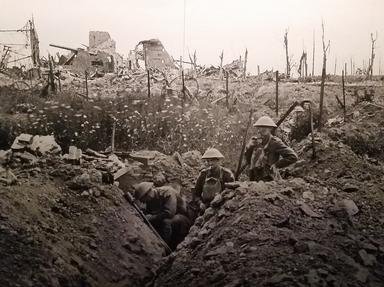Quiz Answer Key and Fun Facts
1. Europe had been in a state of tension and unrest for several years prior to the commencement of WWI, but which event sparked hostilities?
2. At the commencement of hostilities in WWI, who were the allies of Serbia?
3. In which major battle of WWI, occurring in 1916, was the armoured vehicle introduced?
4. In Spring of 1917, which allied force, against all odds, managed to take control of Vimy Ridge, a supposed safe German stronghold?
5. In WWI, the 3rd Battle of Ypres was the Battle of Passchendaele from July 31st to November 6th 1917, but by what name what was the 1st Battle of Ypres also known?
6. In WWI, at the Battle of Jutland, who was the commanding officer of the Royal Navy, responsible for all seafaring battles?
7. In WWI, who were the members of 'the Triple Entente', classed as the original 'Allied Forces'?
8. What happened in October 1917 which led to the Russians withdrawing from the war?
9. In which modern day country is the Gallipoli Peninsula, where the strategic Gallipoli Campaign was fought between April 1915 and January 1916?
10. In WWI what was the first ever fighter aircraft?
Source: Author
DoveHouse
This quiz was reviewed by FunTrivia editor
bloomsby before going online.
Any errors found in FunTrivia content are routinely corrected through our feedback system.

